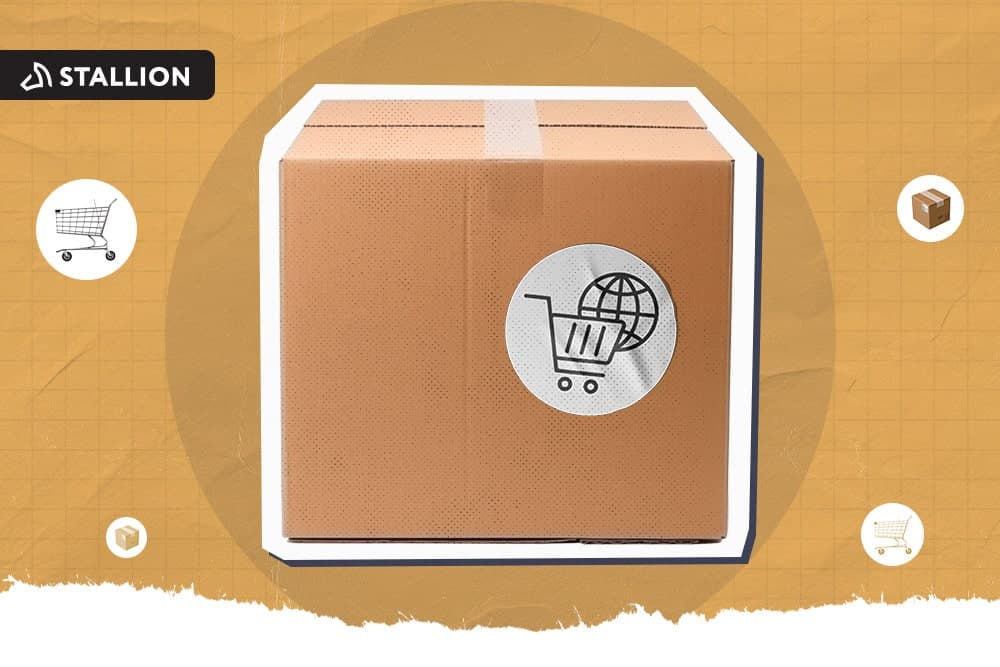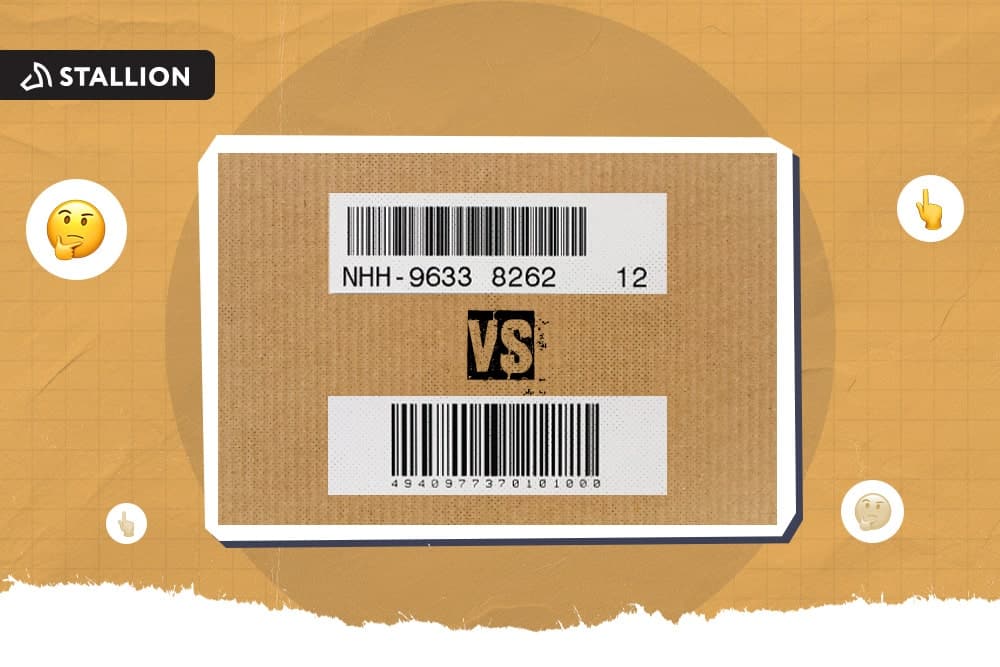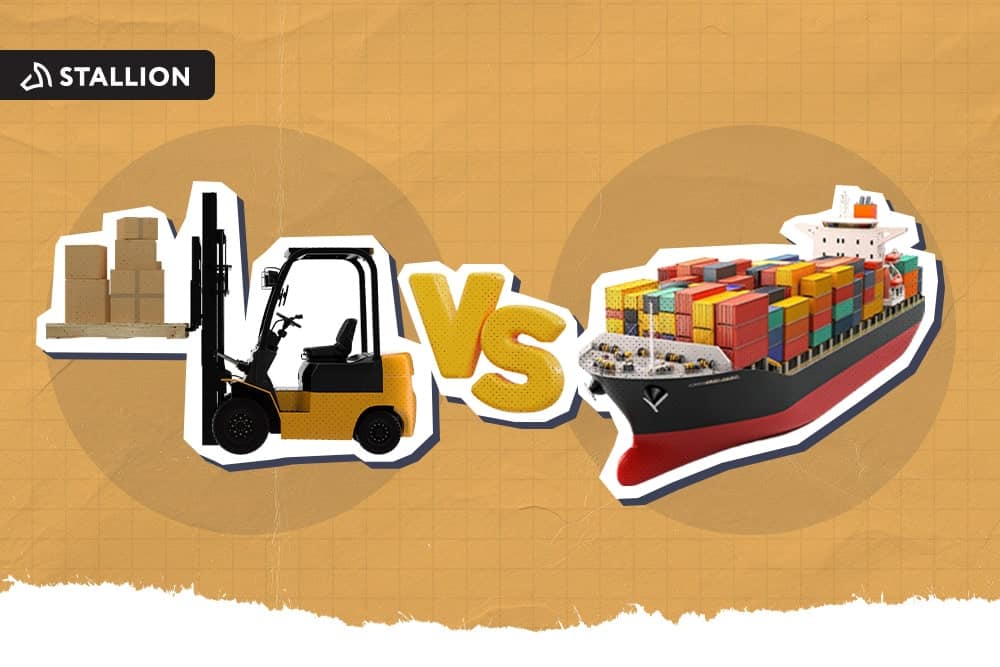
Amazon gains millions of active shoppers daily. If you want to take advantage of the platform for your business, you must gain a full understanding of the fulfillment methods and shipping services currently available on Amazon.
Amazon sellers are free to choose how they will handle their shipping and logistics. If you are an Amazon seller, you should know the different fulfillment methods offered by the platform and decide what works for your business.
Although FBA is growing in popularity among Amazon merchants, having a combination of fulfillment methods is crucial to give you more control over shipping.
The COVID-19 pandemic just showed us why relying solely on FBA is a mistake sellers cannot afford to commit. Amazon's delivery services were put to the test with the surge in demand. Amazon sellers selling non-essential goods who only relied on FBA had their business put on hold by month-long delays.
You don’t want to be caught unprepared when the next unprecedented event hits. Now is the best time to try out Amazon fulfillment options other than FBA.
In this article, we will discuss in detail how Amazon FBM and SFP work.
In Amazon’s FBM program, you are responsible for fulfilling your products. You handle everything, from product listing and storage to packing, shipping, and customer service.
If you want to be a successful seller in Amazon’s FBM program, you need to understand how it works. Here are the three things you need to do.
After creating a seller account on Amazon, the next thing you need to do is to start listing your products. When adding your products to the platform, make sure your listings have accurate information and product description. Doing this will increase your conversion rate.
If you have access to multiple fulfillment centers, it would be strategic to distribute your inventory over several locations. Doing this cuts down your shipping costs and average shipping zone. If you are still starting with your business, a small storage center or even your home can be a temporary storage solution.
After receiving an order notification, ship the product according to the delivery time frame dictated by the customer. They will see an estimated delivery time upon checkout, so they will have an idea when their item will arrive. To set realistic expectations for your customer, you can adjust your shipping and transit time.
You can purchase your shipping labels on your own or through Amazon. Regardless of what you choose, do not forget to provide e-commerce order tracking for the customer. To avoid shipping delays, partner with the best online shipping services provider.
Finally, always make sure to keep your Amazon seller account up-to-date, particularly the instructions for returning FBM orders. Upon accepting a return request from a buyer, the buyer will receive a return label with the return address you provided for your business.
If you sell products exclusive to your brand or products with lower profit margins, Amazon FBM is the suitable product fulfillment option for you.
In particular, FBM is better for you when you are selling
If you’re in a specific situation where FBM turns out to be cheaper than FBA, then go for FBM, by all means.
The FBM program gives you a better insight into how things work in your business. Fulfilling all the shipping and inventory requirements by yourself can give you valuable experience from which your business can profit in the long run.
In FBM, you will be the one dealing with your customers rather than Amazon doing it for you. We know it may seem more like a hassle than an advantage, but it's actually beneficial for your business.
By gaining experience in being your own customer support, you will better understand your consumers’ needs as you deal with them firsthand, whether their feedback is good or bad! Handling negative feedback can give you valuable insights into your business's performance so that you can make adjustments for the better.
Self-fulfilling your merchandise gives you better control over your inventory levels, as well as a better opportunity to expand. Growing your e-commerce business will be smooth-sailing when paying FBA fees and shipping to fulfillment centers are the least of your worries.
It will be easier for you to maintain your shop online and offline when you keep to only one inventory. Since you're storing your inventory in your chosen warehouse, you have complete control of the merchandise to run an offline retail store as well. You get all of this with no worries about any extra shipping and delivery charges.
Without paying additional FBA fees, you can widen your profit margins. You can now also afford to reduce your warehousing expenses and shipment charges.
The pricing and policies for Amazon’s fulfillment often change. They also impose long-term storage fees for inventories that have been in Amazon's fulfillment centers for a long time. With FBM, this will not be a problem.
Although opting for Amazon FBA will mean many of your duties and responsibilities will be taken out of your plate, it also means that you will be asked to strictly comply with Amazon’s rules and regulations. In FBM, you only have to play by your own rules. You won’t have any issues, and your reputation as a seller will remain spotless as long as you ship orders on time.
Many sellers who relied solely on Amazon FBA learned a valuable lesson during the COVID-19 pandemic. With the surge in demand and the postponed shipping of non-essential items, many Amazon FBA sellers were put into a difficult financial situation for several months.
On the other hand, FBM sellers did not have such a problem because their logistics were firmly in their control. It was business as usual for them as they continued to sell and ship their products without a hitch. If you want to avoid a similar scenario, take advantage of the freedom to find reliable shipping services near you to handle your logistics needs.
We have already tackled the many advantages a seller can get when choosing Amazon FBM. However, as with everything, there will always be some disadvantages.
Choosing FBM means the responsibility of picking, packing, and shipping falls to you. Needless to say, those tasks are going to take up time you could use for other things. If you can’t spare extra hours to be more involved in your business’ fulfillment process, then this option might not be for you.
Although dedicating more hours to your business is good, spending more time on fulfillment and less on your Amazon marketing strategy could be a disadvantage.
As discussed previously, Amazon sellers who chose FMB and do the logistics themselves should save more than those who opted for Amazon FBA. However, dealing with the wrong shipping services provider can jeopardize your shipping budget.
Without Amazon’s customer service, you have to deal with your angry customers, including returns, queries, and refunds. It could be an advantage for a better understanding of your customer. However, if you don’t have a lot of time on your hands, this could be a problem.
If you didn't opt for Amazon FBA, you could be eligible for the Amazon Prime badge. This badge could help you reach a higher organic ranking. However, if you qualify for the alternative, SFP, you will enjoy the same access Amazon FBA sellers have.
In Amazon’s FBM program, you have to pay a fee for each item sold. These fees are as follows:
When you list your products on Amazon, each sale you make is considered a referral. Check out Amazon's referral fee schedule to view the fees for each product type.
When you subscribe to Amazon’s Pro FBM service, the additional fees imposed on a sold product are waived for you. The catch, however, is that you have to spend $39.99 for a monthly subscription.
Every time you have an item sold on Amazon, you are charged $0.99. This can be waived when you're subscribed to Amazon's Pro FBM service.
Partnering with third-party logistics providers to handle Amazon FBM requires a fee for storage and fulfillment.
Yes! If you have a wide range of products with varying profit margins, it would be best for you to leverage both FBA and FBM.
Products with good margins and high selling volumes should remain with FBA, while those with lower margins and low selling frequencies should be with FBM.
Through Amazon SFP, you can fulfill orders independently or with a third-party fulfillment provider and then ship them to your customers within two days through Amazon Prime shipping.
Do not confuse this with the Amazon FBA, in which Amazon handles all the shipping and logistics processes. With SFP, you can have a Prime Badge on your listing while maintaining full control over your inventory's fulfillment and storage, similar to how Amazon FBM works.
On February 1, 2021, Amazon updated the requirements for new SFP applications. If you are considering this shipping option, this is your best chance to work on getting your numbers up!
Eligibility
Qualifying for SFP requires that you meet the requirements of Amazon’s premium shipping program.
Below are the updated eligibility requirements for Premium Shipping:
Trial period
After passing the eligibility requirements, you are now required to go through a trial period in the SFP program. During this period, you must fulfill the following requirements on at least 50 Amazon Prime orders.
Post-trial
When you complete the trial period, you will be auto-enrolled in SFP. Note that you must meet the requirements for 7 continuous days.
Terms and policies
To maintain your SFP status, you must adhere to the terms and policies laid out below.
When you are eligible for SFP, you get the same treatment Amazon FBA sellers do. It means your products will be more visible to Amazon Prime members, increasing your conversion and sales.
Like in FBM, your inventory is fully in your hands in SFP because you can ship your merchandise from a third-party warehouse of your choosing. If you offer seasonal products or you sell on multiple channels, this setup will be beneficial for you.
With Amazon's skyrocketing sales, the demand for warehouse space has also increased. It means if you choose to be an FBA seller, you will pay for the increasing cost to store products. Both FBM and SFP give sellers full control over warehousing, which can be a big money-saver.
You cannot do last-minute modifications to your items when you opt for FBA. However, with SPF, you maintain your inventory at your own warehouse, making your products more accessible and flexible.
Failing to meet Amazon's SFP requirements will result in the removal of your Prime eligibility. With the recent changes to SFP, expect more stringent standards that most sellers might find challenging to follow.
Yes, you may have dodged paying FBA and Amazon storage fees. However, you don’t get to keep the money. In SFP, you will still have to bear the cost of warehousing, employee wages, and, of course, shipping.
In the FBA program, Amazon deals with return requests, and the customer sends the product back to Amazon. However, when you are in the SFP program, it will be your responsibility. If you don’t have an established standard operating procedure, this could be very challenging for you.
Both Amazon FBM and SFB are great alternatives to Amazon FBA. However, you should carefully review your options based on cost and opportunity analyses.
The best fulfillment method for your business depends on three things: what you are selling, where you are selling, and how you want your shop to operate. Both Amazon FBM and SFP guarantee the prompt shipping of your products, but they are not the only options. Look into all options and pick the fulfillment strategy that will best meet the needs and demands of your business, whether it’s FBA, FBM or SFP.
Stallion Express offers the best and most reliable shipping services for your Amazon logistics needs. Check out Stallion Express shipping and mailing service near you or drop your packages at our drop-and-go locations. Our company will be responsible for processing your orders and doing the hard labour for you.
If you want to know more about our services in Canada, contact us today at 877-863-7447!
Aman looks after the content marketing department at Stallion Express. He is passionate about helping businesses grow by providing informative and up-to-date trends in the eCommerce industry. Outside the office, you can find him on the soccer field cheering on Real Madrid.



Can our fellow Torontonians relate?
-
#smallbusiness #business #entrepreneur #socialmedia #shipping #ecommerce #canadianecommerce #shopify #poshmark #b2b #saas #etsy #ebay #canada #canadiansmallbusiness #shoplocalcanada #entrepreneur
#toronto

Here’s your quick hassle free shipping from 🇨🇦 to 🇺🇸 as a business owner!
-
Any questions?! Leave them 👇🏻 and save this video so you don’t forget!
-
#smallbusiness #business #entrepreneur #socialmedia #shipping #ecommerce #canadianecommerce #shopify #poshmark #b2b #saas #etsy #ebay #canada #canadiansmallbusiness #shoplocalcanada #entrepreneur

Meet @drinkbenny a 🇨🇦 female founded energy drink brand! Instead of focusing on their products, they’re taking a unique approach by hosting in person events in different Canadian cities to offer an experience for their community 🧡
-
What are your thoughts on in person events? 💭
-
#smallbusiness #business #entrepreneur #socialmedia #shipping #ecommerce #canadianecommerce #shopify #poshmark #b2b #saas #etsy #ebay #canada #canadiansmallbusiness #shoplocalcanada #entrepreneur

Do you know the difference between DDU and DDP when shipping internationally 🌏 ?
-
Questions? Leave them below! 👇🏻
-
#smallbusiness #business #entrepreneur #socialmedia #shipping #ecommerce #canadianecommerce #shopify #poshmark #b2b #saas #etsy #ebay #canada #canadiansmallbusiness #shoplocalcanada #entrepreneur

Here’s a quick hack to save time from choosing multiple postage options
↪️ Turn on the lowest postage rate automation to save you time!
-
Questions? Leave them below! 👇🏻
-
#smallbusiness #business #entrepreneur #socialmedia #shipping #ecommerce #canadianecommerce #shopify #poshmark #b2b #saas #etsy #ebay #canada #canadiansmallbusiness #shoplocalcanada #entrepreneur
